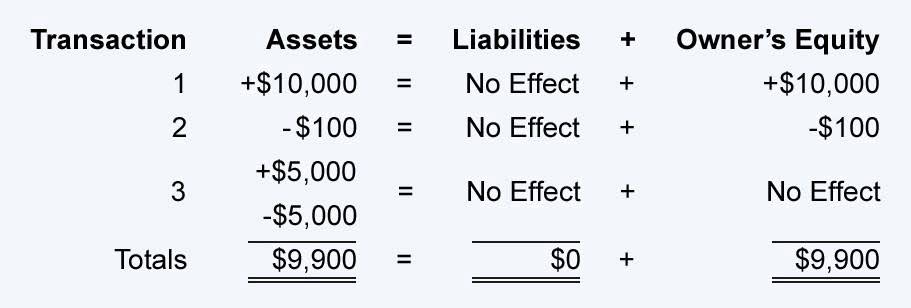
An individual might own some equity in a house but still hold a mortgage or loan. Shareholders’ equity is the net amount of a company’s total assets and total liabilities. These figures can all be found on a company’s balance sheet for a company.

What is shareholders equity on a balance sheet
This equation is the basis for the balance sheet, which summarizes a company’s financial position at a specific point in time. In all of the examples we’ve discussed in this article, the basis of calculating that equity was rooted in this accounting equation. A balance sheet can’t predict changes in the value of a company’s assets or changes to its liabilities that haven’t occurred yet. total stockholders equity Increases or decreases on either side could shift the needle substantially when it comes to the direction in which stockholders’ equity moves. Understanding shareholders’ equity (SE) is crucial, especially for investors.
How To Calculate Stockholders’ Equity

Short-term debts generally fall into the current liabilities category, as these are things that a company is most likely to pay in the near future. Longer-term liabilities are ones that take longer than one year to clear. A shareholders’ equity ratio of 100% means that the company has financed all or almost all of its assets with equity capital Accounting For Architects raised by issuing stock rather than borrowing money. A company lists its treasury stock as a negative number in the equity section of its balance sheet. Treasury stock can also be referred to as “treasury shares” or “reacquired stock.” When a company retains income instead of paying it out in dividends to stockholders, a positive balance in the company’s retained earnings account is created.
Shareholders’ Equity
- Total assets are the total of current assets, such as marketable securities and prepayments, and long-term assets, such as machinery and fixtures.
- The total assets value is calculated by finding the sum of the current and non-current assets.
- Company assets are generally reported at less than their actual value because of accounting principles.
- The final item included in shareholders’ equity is treasury stock, which is the number of shares that have been repurchased from investors by the company.
- Some companies will class out their PP&E by the different types of assets, such as Land, Building, and various types of Equipment.
Assets are reported in the first section of a company’s balance sheet. Assets are things that the company owns, such as real estate, equipment, cash, company stock or product. Assets can also include accounts receivable for goods shipped to customers for which payment has yet to be received. Dividend payments by companies to its stockholders (shareholders) are completely discretionary. Companies have no obligation whatsoever to pay out dividends until they have been formally declared by the board.

Importance of the Balance Sheet
An alternative calculation of company equity is the value of share capital and retained earnings less the value of treasury shares. Treasury shares continue to count as issued shares, but they are not considered to be outstanding and are thus not included in dividends or the calculation of earnings per share (EPS). Treasury shares can always be reissued back to stockholders for purchase when companies need to raise more capital. If a company doesn’t wish to hang on to the shares for future financing, it can choose to retire the shares.
What Is Share Capital?
- Learn financial statement modeling, DCF, M&A, LBO, Comps and Excel shortcuts.
- The shareholders equity ratio measures the proportion of a company’s total equity to its total assets on its balance sheet.
- It’s possible for retained earnings to represent the largest share of owner equity if growth substantially outpaces the amount of capital paid in.
- Below is a break down of subject weightings in the FMVA® financial analyst program.
- Earlier, we were provided with the beginning of period balance of $500,000.
Companies can generally issue either common shares or preferred shares. Common shares represent residual ownership in a company and in the event of liquidation or dividend payments, common shares can adjusting entries only receive payments after preferred shareholders have been paid first. Stockholders’ equity is equal to a firm’s total assets minus its total liabilities.
Applications in Financial Modeling
- A company may refer to its retained earnings as its “retention ratio” or its “retained surplus.”
- By doing this, you’ll increase your assets relative to your debts, which will in turn improve your overall financial position.
- It is the difference between shares offered for subscription and outstanding shares of a company.
- The second way to calculate shareholders equity is to use the company’s share capital and retained earnings information to calculate the shareholder’s equity.
And in some industries, those can be worth more than the assets on the books. Paying dividends can reduce retained earnings – and that lowers equity too. However, debt is also the riskiest form of financing for companies because the corporation must uphold the contract with bondholders to make the regular interest payments regardless of economic times. The “Treasury Stock” line item refers to shares previously issued by the company that were later repurchased in the open market or directly from shareholders.